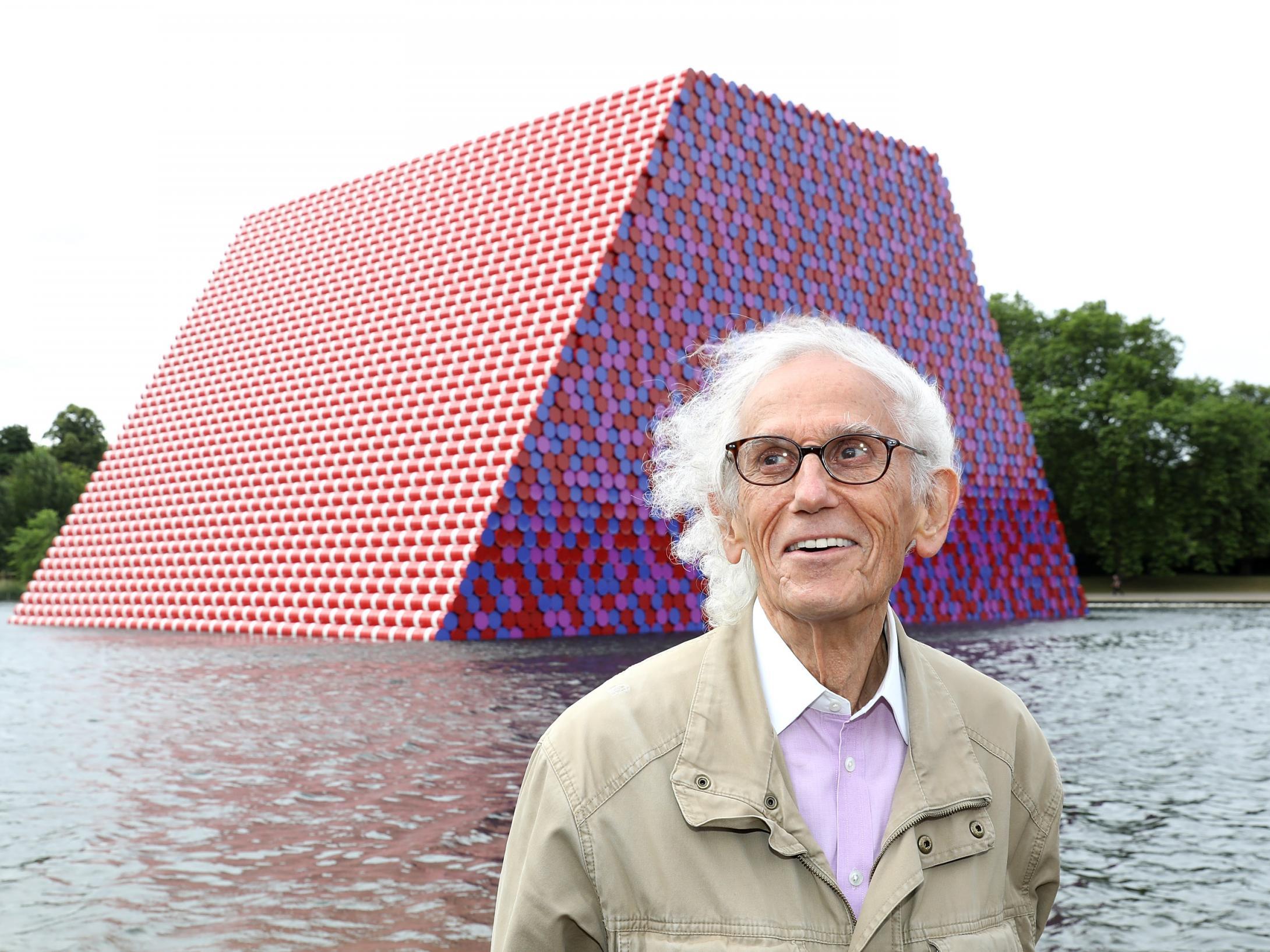Christo: Daring artist who wrapped landmarks and landscapes in cloth
The Reichstag project, for which he and his wife Jeanne-Claude were best known, was devised in 1971 and took 24 years to bring to fruition

Alongside his partner Jeanne-Claude, Christo created some of the world’s largest and most impressive public art projects, including the unforgettable Wrapped Reichstag, their spectacular shrouding of Berlin’s parliament building in 1995. Christo, who has died aged 84, once said of their work: “Traditional sculpture creates its own space. We take a space not belonging to a sculpture, and make sculpture out of it.”
Christo and Jeanne-Claude were born on the same day, 13 June 1935: Jeanne-Claude Denat de Guillebon in Casablanca, Morocco, and Christo Javacheff in Gabrovo, Bulgaria. In 1957 Christo made a dramatic escape from his repressive native country, travelling to Czechoslovakia and thence to Austria and France. His biographer, Burt Chernow, recalled the moment when Christo and 15 other deserters loaded themselves into a cramped rail wagon in Prague: “It was the coldest winter in Christo Javacheff’s memory ... A knifelike wind howled outside ... No one spoke as the door locked behind them. There was no turning back.”
The pair met in Paris in 1958 while Christo was painting the portrait of Precilda de Guillebon, Jeanne-Claude’s mother. Jeanne-Claude married Philippe Planchon the following year but left him shortly afterwards, already pregnant with Christo’s son, Cyril. The couple moved to New York in 1964, initially living at the Chelsea Hotel and then moving to a Manhattan loft, which would be their studio space and home.
The couple’s first public art project together, Stacked Oil Barrels and Dockside Packages, was created in 1961. The installation at the port of Cologne made use of materials including oil barrels and tarpaulin to create impressive and monumental temporary sculptures. The idea of “wrapping” a public building (the Ecole Militaire in Paris) was conceived the following year but never realised. This was the beginning of a long series of works involving the enshrouding of buildings and other structures.
The Wrapped Reichstag project, for which the couple were best known, was devised in 1971 and took 24 years to bring to fruition. On 24 June 1995 a team of 210 professional climbers and installers completed the wrapping of the German parliament building, dropping woven fabric from the top of the building, like an enormous curtain. The result was both surreal and eerie, drawing 5 million visitors during the next two weeks.
“The building is so symbolic, we faced a lot of opposition,” said Christo at the time. “In the course of 24 years, we worked with six different presidents of the bundestag and were refused three times. I was so depressed, I was ready to give up. Then finally, in 1994, it went to a vote and we won.” Despite the public’s appreciation, some remained to be convinced: Chancellor Helmut Kohl, who had unequivocally opposed the idea, left Berlin for the fortnight. Significantly, all the artists’ projects were always self-funded, never receiving any public money from local or national governments. Such was their determination to remain independently financed that in 1988 they refused a $1m fee for a proposed 60-second slot on Japanese television. The ephemeral nature of the works allowed the artists to sell preparatory drawings, photographs and prints to generate the funds necessary for the realisation of the next project.
The Gates, completed in 2005, was the couple’s first outdoor project in their adopted home city of New York. Realised in Central Park, the installation saw bright orange drapes forming arches over the park’s pathways, and welcomed some 5 million visitors. New York mayor, Michael Bloomberg, described it as “one of the most exciting public art projects ever put on anywhere in the world”.
In 2018 Christo and Jeanne-Claude brought The London Mastaba to Hyde Park, a 600-ton brilliantly coloured trapezoidal structure made of 7,000 oil barrels, floating on the Serpentine. The Serpentine Gallery’s director, Hans Ulrich Obrist, said at the launch: “It is our dream come true to have Christo with us.”
When Jeanne-Claude died in November 2009, Christo insisted on retaining her as part of their artist’s name, continuing to work as “Christo and Jeanne-Claude”. They are survived by their son Cyril, a photographer and filmmaker.
Christo Vladimirov Javacheff, artist, born 13 June 1935, died 31 May 2020
Subscribe to Independent Premium to bookmark this article
Want to bookmark your favourite articles and stories to read or reference later? Start your Independent Premium subscription today.

Join our commenting forum
Join thought-provoking conversations, follow other Independent readers and see their replies